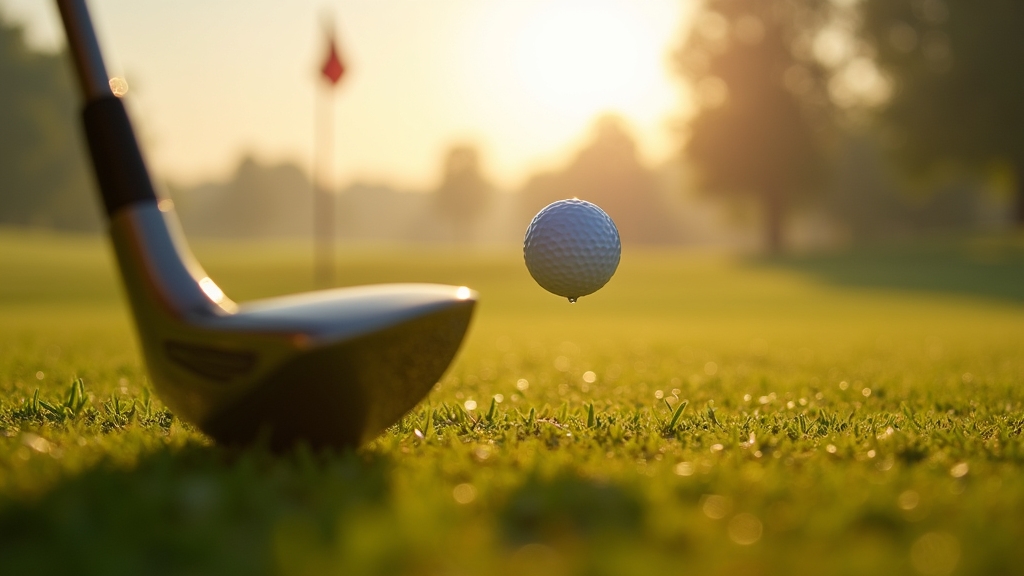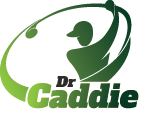Carry in golf is the distance your ball flies through the air before touching the ground. This helps you clear hazards like water or bunkers confidently. You control carry by adjusting swing speed, launch angle, and impact quality. These factors directly affect how far your ball travels.
Understanding and improving your carry lets you plan shots more strategically and avoid trouble on the course. Keep exploring, and you’ll discover ways to boost your carry and master your game.
- Key Takeaways
- Understanding the Definition of Carry in Golf
- Key Factors Influencing Carry Distance
- Strategic Importance of Carry on the Course
- Techniques to Enhance Carry Distance
- Measuring and Analyzing Carry Using Technology
- Frequently Asked Questions
- Find the Perfect Club to Maximize Your Carry Distance
Key Takeaways
- Carry in golf is the straight-line distance a ball travels through the air before first touching the ground.
- It excludes roll or bounce and assumes a flat, level landing area for accurate measurement.
- Carry distance helps golfers avoid hazards like water or bunkers by selecting the right club.
- Factors like clubhead speed, launch angle, and spin rate directly influence carry distance.
- Launch monitors and radar devices measure carry to improve swing mechanics and shot planning.
Understanding the Definition of Carry in Golf

Although it might seem straightforward, understanding carry in golf is essential for improving your game. Carry is the straight-line distance your ball travels through the air, from the moment it leaves your clubface until it first touches the ground.
It assumes a flat, level landing area to standardize measurements, so carry doesn’t include any roll or bounce after landing. This is often referred to as the carry flat measurement. You’ll hear carry used as a noun to describe distance and as a verb when you need to clear hazards like water or bunkers.
Modern launch monitors help you measure carry precisely, so you can calibrate your clubs accurately. Knowing your carry distance builds confidence, guides club selection, and helps you avoid hazards. Understanding your carry distance also helps you choose the right club for each shot, ensuring optimal club organization in your golf bag.
Key Factors Influencing Carry Distance
When you want to improve your carry distance, understanding the key factors that influence it is vital. Carry distance depends mainly on how efficiently you transfer energy to the ball and how your shot flies through the air. Choosing the right equipment and ensuring it suits your swing can significantly impact your overall performance.
Focus on these critical areas to boost your carry:
- Clubhead speed and swing dynamics: Faster clubhead speed increases ball speed and carry. It is important to note that club speed is the primary factor influencing distance.
- Launch angle: Optimizing this helps maximize air time and distance.
- Impact location: Hitting the sweet spot ensures efficient energy transfer and longer carry.
- Spin rate: Controlling spin avoids excess drag that shortens carry distance.
Mastering these factors through practice and proper equipment fitting will help you consistently hit longer, more accurate shots.
Strategic Importance of Carry on the Course
Since knowing your carry distance shapes every shot you take, use this knowledge strategically on the course. Proper use of distance markers can significantly enhance your carry distance accuracy. Understanding your carry helps you select the right club to avoid hazards like water or bunkers by carrying the ball safely beyond or short of trouble spots.
It sharpens your approach shots by providing precise distance control, especially near tricky pins, reducing risks of overshooting or falling short. Tracking carry distances also highlights inconsistencies in your swing, guiding improvements and boosting confidence.
On the course, it empowers you to plan smarter, balancing risk and safety, adapting to wind or elevation. Accurate carry measurement is achieved by analyzing ball speed and spin, which ensures reliable shot planning.
Techniques to Enhance Carry Distance
To boost your carry distance, you need to focus on optimizing key aspects of your swing and equipment that directly influence ball speed and launch conditions.
Improving wrist action and maintaining a flat lead wrist at the top of your backswing help square the clubface for better ball flight. Coordinated hip rotation and extending your swing arc increase clubhead speed, essential for longer carry. Using drills like the Shaft Extension Stick Drill can help ensure proper hip rotation through impact, maximizing power transfer.
Adjusting your equipment through custom fitting also plays an essential role. Keep these techniques in mind:
- Hit up on the ball to maximize launch height and reduce spin.
- Use a driver with the right shaft flex and loft for your swing speed.
- Focus on clean, centered contact to maximize ball speed.
- Engage your lower body to generate ground reaction forces for extra power.
Apply these tips consistently to see your carry distance improve.
Measuring and Analyzing Carry Using Technology
Although carry distance might seem straightforward, accurately measuring and analyzing it requires sophisticated technology that captures detailed ball and club data immediately after impact.
Devices like Foresight Sports’ launch monitors and Trackman use high-speed cameras and Doppler radar to track ball speed, launch angle, spin rates, and club parameters. The Rapsodo Mobile Launch Monitor (MLM) combines camera + radar technology to provide precise measurements of these metrics for personal use.
This data helps you understand how far your shot travels through the air, separate from roll. By analyzing carry alongside spin and launch characteristics, you can refine your club selection and swing mechanics for more consistent, controlled shots.
Advances in golf ball technology also improve carry prediction accuracy. Using these tools motivates you to optimize every shot strategically, turning raw data into actionable insights that elevate your game and boost confidence on the course.
Frequently Asked Questions
How Does Weather Specifically Affect Carry Distance During a Round?
Weather affects your carry distance mainly through temperature, wind, humidity, and altitude. Warmer temps boost carry by increasing ball speed and reducing air density, while cold temps do the opposite. Wind can either cut your carry or add yards depending on direction.
Humidity’s effect is minimal, so don’t stress it. Playing at higher altitudes helps your ball travel farther due to thinner air. Adjust your club choice accordingly to maximize your shot.
What Is the Average Carry Distance for Beginner Golfers?
As a beginner golfer, your average carry distance with a driver will likely be around 170 to 200 yards if you’re male, and about 130 to 160 yards if you’re female. Don’t worry if it’s less at first; it’s normal. Focus on improving your swing speed and technique through consistent practice.
Choosing forgiving clubs and understanding your distances will boost your confidence and help you progress steadily on the course. Keep at it!
Can Different Golf Balls Significantly Change Carry Distance?
You might think switching golf balls will move the needle, but different balls usually don’t make a big splash in carry distance. Most brand-name balls fly about the same under controlled conditions. It’s like trying to turn a ship with a paddle; minor tweaks won’t change your course much.
Instead, focus on your swing speed, launch angle, and spin control to really boost how far your shots carry.
How Do Course Elevations Impact Carry Measurements?
Course elevations impact your carry measurements by changing air density. Higher elevations reduce drag, letting your ball travel farther with the same swing. You’ll gain roughly 2% more carry distance for every 1,000 feet above sea level. This means you’ll need less club uphill and more downhill.
Always adjust your club selection and practice with elevation in mind to avoid surprises and improve your accuracy on varied terrain.
Are There Carry Distance Standards for Junior Golfers?
You won’t find universal carry distance standards for junior golfers because their skills, ages, and physical development vary widely. Instead, programs like JOLF and US Kids Golf provide adaptable tee lengths based on your carry ability.
The best approach is to measure your own carry distances regularly, so you can choose tees and clubs that fit you perfectly. This helps you enjoy the game while improving your performance confidently.
Find the Perfect Club to Maximize Your Carry Distance
Now that you know carry means how far your ball travels in the air, you see why it’s essential to your game. You might wonder if just swinging harder increases carry, but it’s really about technique, club choice, and conditions.
By focusing on these factors and using technology to measure your shots, you can boost your carry distance strategically. Keep practicing smartly and watch your confidence and your scores improve on every hole.

